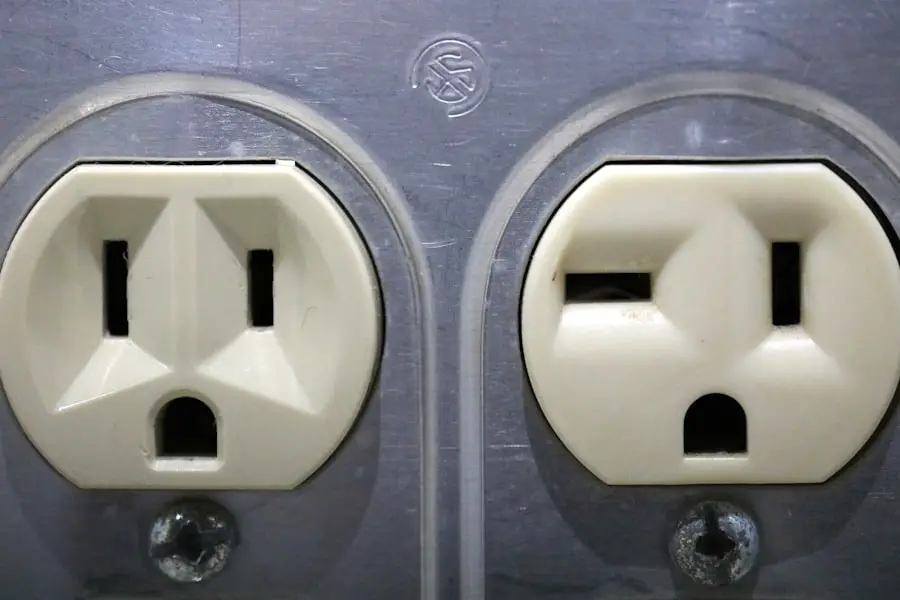When it comes to choosing a place to stay while traveling, understanding the differences between motels and hotels is crucial. Motels, typically designed for motorists, are often located along highways and feature exterior corridors that allow guests to park directly outside their rooms. This design caters to travelers seeking convenience and quick access to their vehicles.
In contrast, hotels are usually larger establishments with interior corridors, offering a more centralized experience. They often provide a range of services and amenities that cater to both leisure and business travelers. The architectural styles of motels and hotels also differ significantly.
Motels are generally single or double-story buildings with a straightforward layout, while hotels can be multi-story structures with elaborate designs and various room configurations. The simplicity of motels appeals to those looking for a no-frills experience, whereas hotels often aim to create a more luxurious atmosphere, complete with upscale furnishings and decor. This distinction in design reflects the different target markets each type of accommodation serves, influencing the overall guest experience.
Key Takeaways
- Motels are typically smaller, roadside accommodations with direct access to parking, while hotels are larger, multi-story buildings with more amenities and services.
- Hotels generally offer a wider range of services and amenities such as room service, concierge, and on-site restaurants, while motels tend to offer more basic amenities like free parking and Wi-Fi.
- Motels are often located in suburban or rural areas, while hotels are commonly found in urban centers and tourist destinations.
- Motels are generally more budget-friendly, while hotels can range from budget to luxury accommodations, offering a wider range of prices and value.
- Motels cater to budget-conscious travelers, families, and road trippers, while hotels cater to business travelers, tourists, and those seeking a more luxurious experience.
Services and Amenities: What to Expect
When considering services and amenities, hotels typically offer a broader range of options compared to motels. Hotels often feature on-site restaurants, fitness centers, swimming pools, and business facilities such as meeting rooms and conference spaces. These amenities cater to guests who may be traveling for work or leisure and seek additional comforts during their stay.
For instance, a business traveler might appreciate the availability of high-speed internet, printing services, and a complimentary breakfast to start their day. Motels, on the other hand, tend to focus on essential services. While some may offer basic amenities like free Wi-Fi and continental breakfast, they usually lack the extensive facilities found in hotels.
The primary goal of a motel is to provide a comfortable place to rest for travelers on the go. For example, a family on a road trip might choose a motel for its affordability and convenience, knowing they can quickly check in and out without the need for elaborate services. This difference in offerings highlights the varying expectations guests have when selecting their accommodations.
Location and Size: Understanding the Differences

Location plays a significant role in distinguishing motels from hotels. Motels are often strategically positioned along major highways or near popular tourist attractions, making them easily accessible for travelers who are driving. This convenience is particularly appealing for those on road trips or short getaways who prioritize quick access to their accommodations.
For instance, a traveler driving cross-country may opt for a motel that allows them to rest without deviating far from their route. Hotels, conversely, are frequently situated in urban centers or popular tourist destinations where foot traffic is high. Their locations are chosen to attract both leisure and business travelers who may want to explore the surrounding area or attend events nearby.
A hotel in a bustling city may offer easy access to cultural landmarks, shopping districts, and dining options, enhancing the overall travel experience. The size of these establishments also varies; hotels can range from boutique options with a few dozen rooms to large chains with hundreds of rooms, catering to different types of guests and their needs.
Price and Value: Comparing Costs
| Product | Price | Value |
|---|---|---|
| Product A | 50 | High |
| Product B | 30 | Medium |
| Product C | 70 | High |
When comparing costs between motels and hotels, it is essential to consider not only the price per night but also the value offered by each type of accommodation. Motels generally provide lower rates than hotels due to their limited services and amenities. This affordability makes them an attractive option for budget-conscious travelers or those seeking a simple place to stay without frills.
For example, a family on a tight budget might choose a motel that offers basic accommodations at a fraction of the cost of a hotel. However, while motels may be cheaper upfront, hotels often provide added value through their extensive amenities and services. A hotel stay might include complimentary breakfast, access to fitness facilities, or even concierge services that enhance the guest experience.
For instance, a business traveler might find that the additional cost of staying at a hotel is justified by the convenience of having meeting spaces and business services readily available. Ultimately, the decision between motels and hotels often hinges on individual preferences regarding budget versus the desire for additional comforts.
Target Audience: Who do they cater to?
The target audience for motels and hotels varies significantly based on their respective offerings and locations. Motels primarily cater to road travelers, families on vacation, and individuals seeking short-term stays without the need for extensive amenities. Their straightforward approach appeals to those who prioritize convenience over luxury.
For example, a couple on a weekend getaway might choose a motel for its easy access off the highway and affordable rates. Hotels, in contrast, attract a more diverse clientele that includes business travelers, tourists seeking luxury experiences, and families looking for comprehensive services during their stay. Business travelers often prefer hotels due to their proximity to corporate offices and conference centers, as well as the availability of amenities like high-speed internet and meeting rooms.
Tourists may opt for hotels located near attractions or entertainment districts that enhance their travel experience. The varying target audiences reflect the distinct purposes each type of accommodation serves in the hospitality industry.
History and Evolution: The Origins of Motels and Hotels

The origins of motels can be traced back to the early 20th century when automobile travel became increasingly popular in the United States. The first motel is often credited to Arthur Heineman, who opened the Milestone Mo-Tel in San Luis Obispo, California, in 1925. This establishment was designed specifically for motorists, featuring parking spaces adjacent to guest rooms—a novel concept at the time.
As car travel surged in popularity during the post-World War II era, motels proliferated across America, catering to families embarking on road trips. Hotels have a much longer history that dates back centuries. The concept of providing lodging can be traced back to ancient civilizations where travelers sought refuge during their journeys.
The first known hotel is believed to be the “Hotel de Ville” in Paris, established in 1783. Over time, hotels evolved from simple inns into luxurious establishments offering various services and amenities tailored to affluent guests. The rise of international travel in the 19th century further propelled the growth of hotels as they adapted to meet the needs of an increasingly mobile society.
Advantages and Disadvantages: Pros and Cons of Each Option
Both motels and hotels come with their own set of advantages and disadvantages that can influence a traveler’s choice of accommodation. One significant advantage of motels is their affordability; they typically offer lower rates than hotels, making them an attractive option for budget-conscious travelers or those seeking short-term stays. Additionally, motels provide convenience with easy access from parking lots directly to guest rooms—ideal for families with children or travelers with heavy luggage.
However, motels often lack the extensive amenities found in hotels, which can be seen as a disadvantage for those seeking more comfort during their stay. Limited services may mean fewer dining options or recreational facilities available on-site. Conversely, hotels offer a wide range of amenities that enhance the guest experience but come at a higher price point.
The luxurious atmosphere and additional services can justify the cost for many travelers but may not be necessary for those simply looking for a place to sleep.
Choosing the Right Accommodation: Factors to Consider
When deciding between motels and hotels, several factors should be taken into account to ensure an optimal travel experience. First and foremost is budget; understanding how much one is willing to spend can significantly narrow down options. If affordability is paramount, motels may be the best choice; however, if comfort and additional services are desired, investing in a hotel stay could be worthwhile.
Location is another critical factor; travelers should consider proximity to attractions or business centers when selecting accommodations. A hotel situated in a bustling urban area may provide easy access to cultural sites or corporate offices but could come with higher rates due to its prime location. Conversely, a motel located near highways may offer convenience for road trips but might lack nearby attractions.
Additionally, personal preferences play an essential role in this decision-making process. Some travelers prioritize simplicity and ease of access over luxury amenities, while others may seek out hotels that provide comprehensive services tailored to their needs. Understanding these preferences can help guide travelers toward accommodations that align with their expectations and enhance their overall experience while away from home.
If you’re looking to travel light and efficiently, you may want to consider investing in a minimalist travel backpack. Check out this article on 5 Must-Have Minimalist Travel Backpacks for Spring Adventures 2025 for some great options. And while you’re on the road, don’t forget to pack a portable white noise machine for a good night’s sleep. You can find some top recommendations in this article on Portable White Noise Machine for Travel.
FAQs
What is the difference between a motel and a hotel?
A motel is typically a one or two-story building with rooms that have direct access to the parking lot, while a hotel is usually a multi-story building with rooms that have interior corridors and elevators.
What are the amenities typically offered at a motel?
Motel amenities often include free parking, exterior room access, and basic facilities such as a swimming pool, vending machines, and sometimes a continental breakfast.
What are the amenities typically offered at a hotel?
Hotels typically offer a wider range of amenities, including room service, on-site restaurants, fitness centers, business centers, concierge services, and sometimes a spa or other luxury facilities.
What is the typical target market for motels?
Motels are often targeted towards budget-conscious travelers, families, and road trippers looking for a convenient and affordable place to stay for a night or two.
What is the typical target market for hotels?
Hotels cater to a wider range of travelers, including business professionals, tourists, and those seeking a more luxurious and comfortable accommodation experience.
